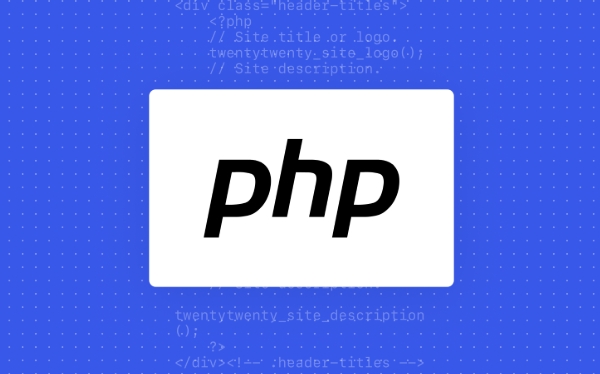Writing PHP block comments should be standardized and practical, and is suitable for instructions on large segments of structured code such as functions, classes, and file headers. 1. Usage scenarios include function description, class design intention, complex logical process, copyright information, etc.; 2. The standard format adopts /.../ package, follows the PSR-5 standard, summarizes the first line in one sentence, explains in detail after emptying the line, and uses @param, @return, @throws and other tags to explain the parameters and return values; 3. Practical suggestions include keeping the content concise, aligning and beautiful, avoiding redundancy, and regularly maintaining the consistency of annotations; 4. Common misunderstandings such as inconsistent annotations and code, ignoring the use of tags, and verbose content, you should use the IDE to automatically generate templates to improve efficiency. Standardized block annotations help improve code readability and team collaboration efficiency.

Writing PHP block comments is actually quite simple, but many people are not using them properly or do not play their role. Block Comments are generally used for multi-line explanations, such as descriptions of functions, classes, and file headers. Writing well can not only help you clarify the logic, but also make it easier for others to understand your code.

When should I use block comments?
Block comments are not written casually. They are best used to explain large pieces of code with clear structures , such as the overall function of a function, the design intention of a certain class, or a complicated logic processing flow.
- Comments before function definition explain the purpose, parameters and return value
- Write a paragraph at the beginning of the class to explain the role and usage scenarios of this class
- Copyright information or overall description at the top of the file
In this case, single-line comments appear fragmentary, and block comments can express the content more completely.

How to write standard PHP block comments?
PHP's block comments are wrapped with /* ... */ and support cross-row. In terms of writing, it is recommended to follow the PSR standard (especially PSR-5), so that teams can work more uniformly.
The basic format is as follows:

/**
* A brief sentence is written here to explain the function*
* You can write more detailed instructions here, such as implementation methods, precautions, etc.*
* @param string $name Username* @return bool Whether it passes the verification*/
function validateUser($name) {
// ...
}Some practical suggestions:
- Write a sentence to summarize the first line, and then explain in detail after the empty line
- Use
@param,@return,@throwsand other tags to explain the details - Maintain alignment and improve readability
- Don't write nonsense, such as meaningless content like "This is a function"
Common misunderstandings and precautions
Some students are prone to going astray when writing block notes, which will affect their reading experience. Here are some FAQs and suggestions for improvement:
- ? The comments and code are inconsistent: the code has been changed but the comments have not been updated, which misleads others.
- ? Too long-winded: writing things that can be understood by the code itself is unnecessary
- ? Ignore tags: You can clearly use
@paramto clearly explain the parameter type, but only write Chinese descriptions - ? Reasonable maintenance: Check whether the comments need to be synchronized every time you modify the function
- ? Template: IDE supports automatic generation of comment templates, such as PhpStorm, you can enter
/**and then enter to automatically complete the parameter information.
Basically that's it. It is not difficult to write good block comments, the key is to adhere to and regulate. Don’t underestimate these lines of comments, it may be the first bridge for communication between you and your colleagues.
The above is the detailed content of Creating PHP Block Comments. For more information, please follow other related articles on the PHP Chinese website!

Hot AI Tools

Undress AI Tool
Undress images for free

Undresser.AI Undress
AI-powered app for creating realistic nude photos

AI Clothes Remover
Online AI tool for removing clothes from photos.

Clothoff.io
AI clothes remover

Video Face Swap
Swap faces in any video effortlessly with our completely free AI face swap tool!

Hot Article

Hot Tools

Notepad++7.3.1
Easy-to-use and free code editor

SublimeText3 Chinese version
Chinese version, very easy to use

Zend Studio 13.0.1
Powerful PHP integrated development environment

Dreamweaver CS6
Visual web development tools

SublimeText3 Mac version
God-level code editing software (SublimeText3)

Hot Topics
 How to iterate over a Map in Java?
Jul 13, 2025 am 02:54 AM
How to iterate over a Map in Java?
Jul 13, 2025 am 02:54 AM
There are three common methods to traverse Map in Java: 1. Use entrySet to obtain keys and values at the same time, which is suitable for most scenarios; 2. Use keySet or values to traverse keys or values respectively; 3. Use Java8's forEach to simplify the code structure. entrySet returns a Set set containing all key-value pairs, and each loop gets the Map.Entry object, suitable for frequent access to keys and values; if only keys or values are required, you can call keySet() or values() respectively, or you can get the value through map.get(key) when traversing the keys; Java 8 can use forEach((key,value)->
 Java Optional example
Jul 12, 2025 am 02:55 AM
Java Optional example
Jul 12, 2025 am 02:55 AM
Optional can clearly express intentions and reduce code noise for null judgments. 1. Optional.ofNullable is a common way to deal with null objects. For example, when taking values ??from maps, orElse can be used to provide default values, so that the logic is clearer and concise; 2. Use chain calls maps to achieve nested values ??to safely avoid NPE, and automatically terminate if any link is null and return the default value; 3. Filter can be used for conditional filtering, and subsequent operations will continue to be performed only if the conditions are met, otherwise it will jump directly to orElse, which is suitable for lightweight business judgment; 4. It is not recommended to overuse Optional, such as basic types or simple logic, which will increase complexity, and some scenarios will directly return to nu.
 How to fix java.io.NotSerializableException?
Jul 12, 2025 am 03:07 AM
How to fix java.io.NotSerializableException?
Jul 12, 2025 am 03:07 AM
The core workaround for encountering java.io.NotSerializableException is to ensure that all classes that need to be serialized implement the Serializable interface and check the serialization support of nested objects. 1. Add implementsSerializable to the main class; 2. Ensure that the corresponding classes of custom fields in the class also implement Serializable; 3. Use transient to mark fields that do not need to be serialized; 4. Check the non-serialized types in collections or nested objects; 5. Check which class does not implement the interface; 6. Consider replacement design for classes that cannot be modified, such as saving key data or using serializable intermediate structures; 7. Consider modifying
 Java Socket Programming Fundamentals and Examples
Jul 12, 2025 am 02:53 AM
Java Socket Programming Fundamentals and Examples
Jul 12, 2025 am 02:53 AM
JavaSocket programming is the basis of network communication, and data exchange between clients and servers is realized through Socket. 1. Socket in Java is divided into the Socket class used by the client and the ServerSocket class used by the server; 2. When writing a Socket program, you must first start the server listening port, and then initiate the connection by the client; 3. The communication process includes connection establishment, data reading and writing, and stream closure; 4. Precautions include avoiding port conflicts, correctly configuring IP addresses, reasonably closing resources, and supporting multiple clients. Mastering these can realize basic network communication functions.
 Comparable vs Comparator in Java
Jul 13, 2025 am 02:31 AM
Comparable vs Comparator in Java
Jul 13, 2025 am 02:31 AM
In Java, Comparable is used to define default sorting rules internally, and Comparator is used to define multiple sorting logic externally. 1.Comparable is an interface implemented by the class itself. It defines the natural order by rewriting the compareTo() method. It is suitable for classes with fixed and most commonly used sorting methods, such as String or Integer. 2. Comparator is an externally defined functional interface, implemented through the compare() method, suitable for situations where multiple sorting methods are required for the same class, the class source code cannot be modified, or the sorting logic is often changed. The difference between the two is that Comparable can only define a sorting logic and needs to modify the class itself, while Compar
 Java method references explained
Jul 12, 2025 am 02:59 AM
Java method references explained
Jul 12, 2025 am 02:59 AM
Method reference is a way to simplify the writing of Lambda expressions in Java, making the code more concise. It is not a new syntax, but a shortcut to Lambda expressions introduced by Java 8, suitable for the context of functional interfaces. The core is to use existing methods directly as implementations of functional interfaces. For example, System.out::println is equivalent to s->System.out.println(s). There are four main forms of method reference: 1. Static method reference (ClassName::staticMethodName); 2. Instance method reference (binding to a specific object, instance::methodName); 3.
 How to handle character encoding issues in Java?
Jul 13, 2025 am 02:46 AM
How to handle character encoding issues in Java?
Jul 13, 2025 am 02:46 AM
To deal with character encoding problems in Java, the key is to clearly specify the encoding used at each step. 1. Always specify encoding when reading and writing text, use InputStreamReader and OutputStreamWriter and pass in an explicit character set to avoid relying on system default encoding. 2. Make sure both ends are consistent when processing strings on the network boundary, set the correct Content-Type header and explicitly specify the encoding with the library. 3. Use String.getBytes() and newString(byte[]) with caution, and always manually specify StandardCharsets.UTF_8 to avoid data corruption caused by platform differences. In short, by
 How to parse JSON in Java?
Jul 11, 2025 am 02:18 AM
How to parse JSON in Java?
Jul 11, 2025 am 02:18 AM
There are three common ways to parse JSON in Java: use Jackson, Gson, or org.json. 1. Jackson is suitable for most projects, with good performance and comprehensive functions, and supports conversion and annotation mapping between objects and JSON strings; 2. Gson is more suitable for Android projects or lightweight needs, and is simple to use but slightly inferior in handling complex structures and high-performance scenarios; 3.org.json is suitable for simple tasks or small scripts, and is not recommended for large projects because of its lack of flexibility and type safety. The choice should be decided based on actual needs.






